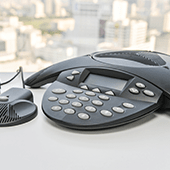 There are so many VoIP phone systems in the market that you’re bound to come across a few with similar features and add-on services. When this happens, most business owners will compare the price and purchase the more affordable option. But you shouldn’t only be looking at the initial price of the VoIP system; you must also look at the total cost of ownership (TCO).
There are so many VoIP phone systems in the market that you’re bound to come across a few with similar features and add-on services. When this happens, most business owners will compare the price and purchase the more affordable option. But you shouldn’t only be looking at the initial price of the VoIP system; you must also look at the total cost of ownership (TCO).
What is TCO?
The TCO is the overall sum of procuring, deploying, and operating a VoIP system has over its life cycle, which is typically five years. Naturally, some of the costs (like operating costs) can be predicted only before the implementation, but an experienced VoIP expert should be able to give you an informed approximation.
Upfront costs
When selecting a VoIP system, make sure to check the features offered and the quality of the system — by looking at reviews — so you get the best bang for your buck. While full-featured, high-quality phone systems will come at much higher price points, they do tend to be more reliable and require less maintenance than a cheap phone system.
Beyond the price of the VoIP package, there are also additional costs like headsets, webcams, and a stronger network connection to ensure crystal-clear calls.
You also have to consider the payment options. You could either buy it outright or rent it from a reputable third party. Although the former carries a steep upfront cost, payment will not continue indefinitely. This makes sense for large, fully staffed corporations with massive budgets. Meanwhile, the latter option is better for small- and medium-sized businesses that prefer to pay a monthly subscription for the phone features they need rather than make a huge investment.
Implementation costs
In addition to upfront costs, you’ll have to pay a consultant or managed services provider (MSP) to design, deploy, and configure your VoIP system.
Then, there’s onboarding. Since you’re installing a completely new phone system, you’ll need to hire experts who can teach employees how to use the VoIP system effectively and securely.
Operational costs
This covers monthly recurring costs of voice and data plans. For example, some service providers charge local and long distance calls per minute, while others offer unlimited local calls for a fixed monthly cost.
If you’re managing your VoIP system yourself, you’ll also have to take into account the monthly power, cooling, and maintenance fees. If you opt for hosted VoIP services, however, you’ll be billed only for the maintenance.
Upgrade costs
You should also set aside some room in your budget for VoIP upgrades. For instance, to improve customer service, you may need to integrate customer relationship management software with VoIP, but that requires a certified CRM expert to facilitate the entire integration process.
Evaluating all the costs that apply to your business will give you a clear idea of how much you can expect to pay for your VoIP system. You can also compare VoIP TCO with traditional phone system TCO to make a business case for VoIP.
If you’re having difficulty calculating the real costs of VoIP, call our experts today. We’ll help you figure out which VoIP solution is most ideal for your business and budget.
